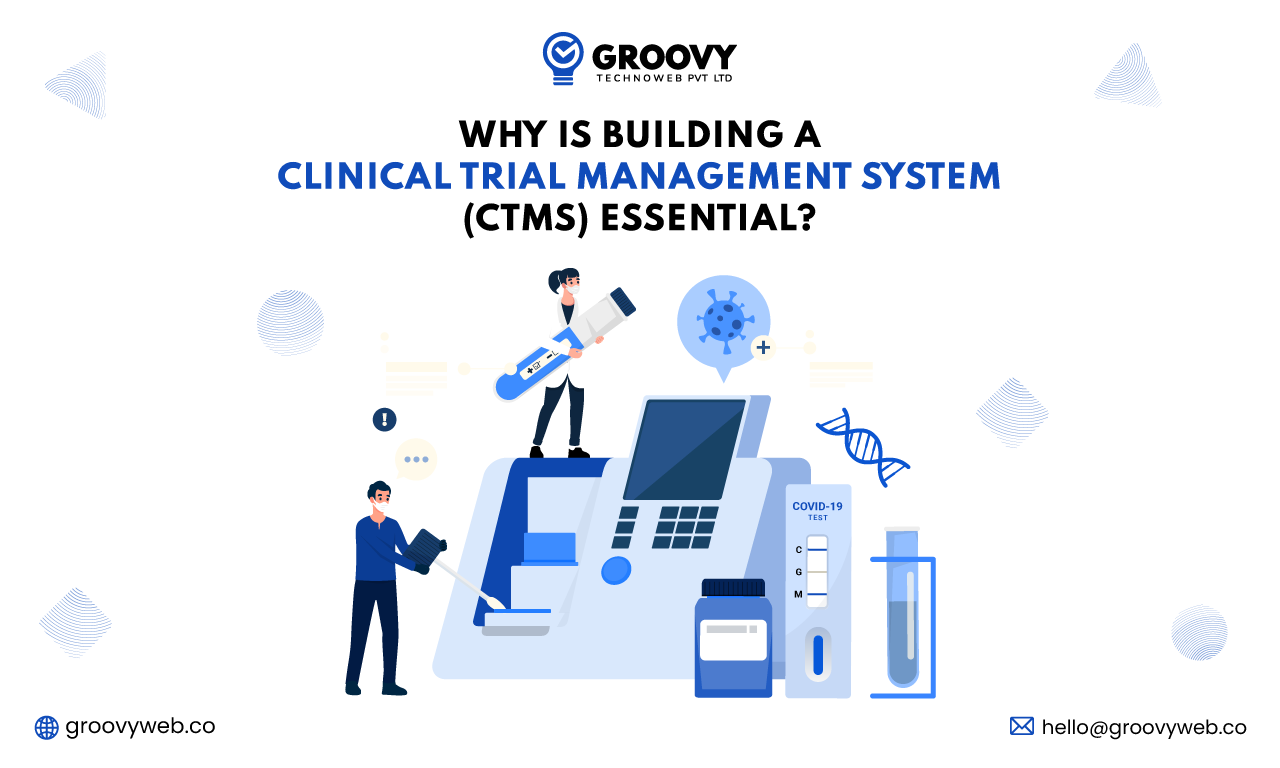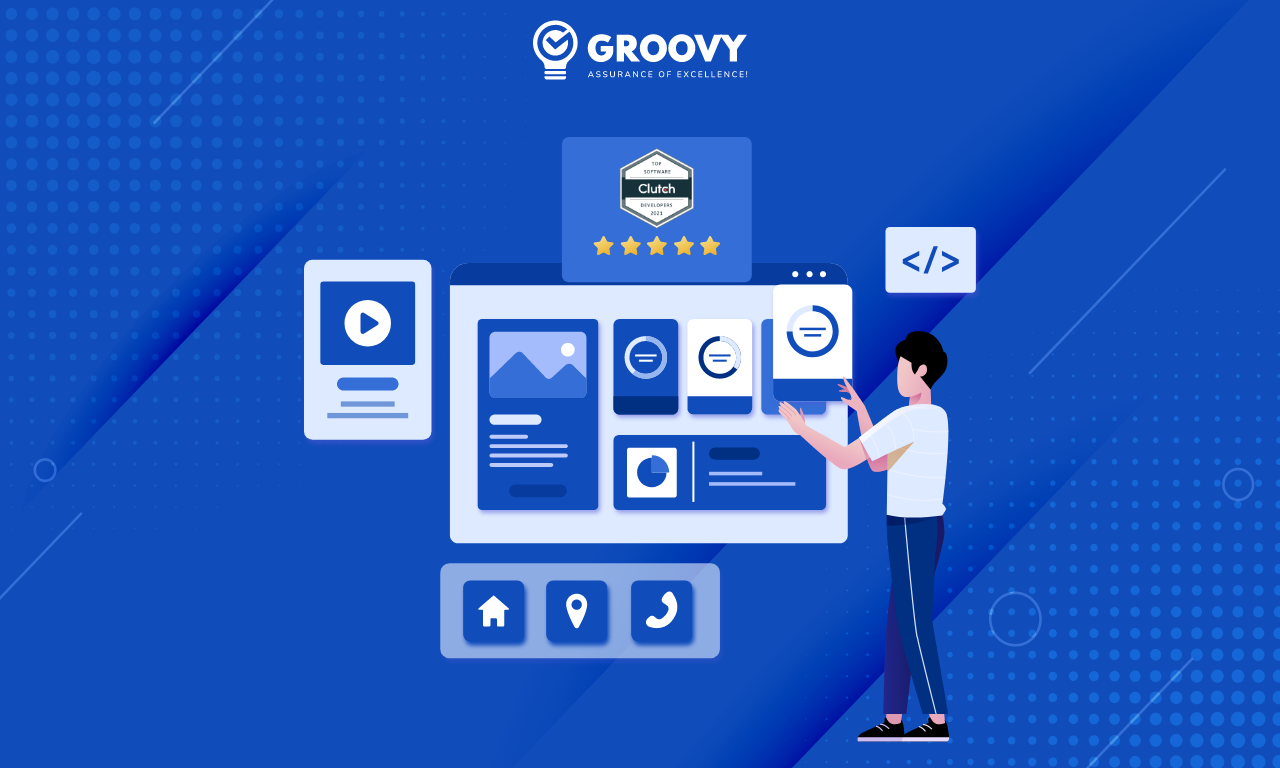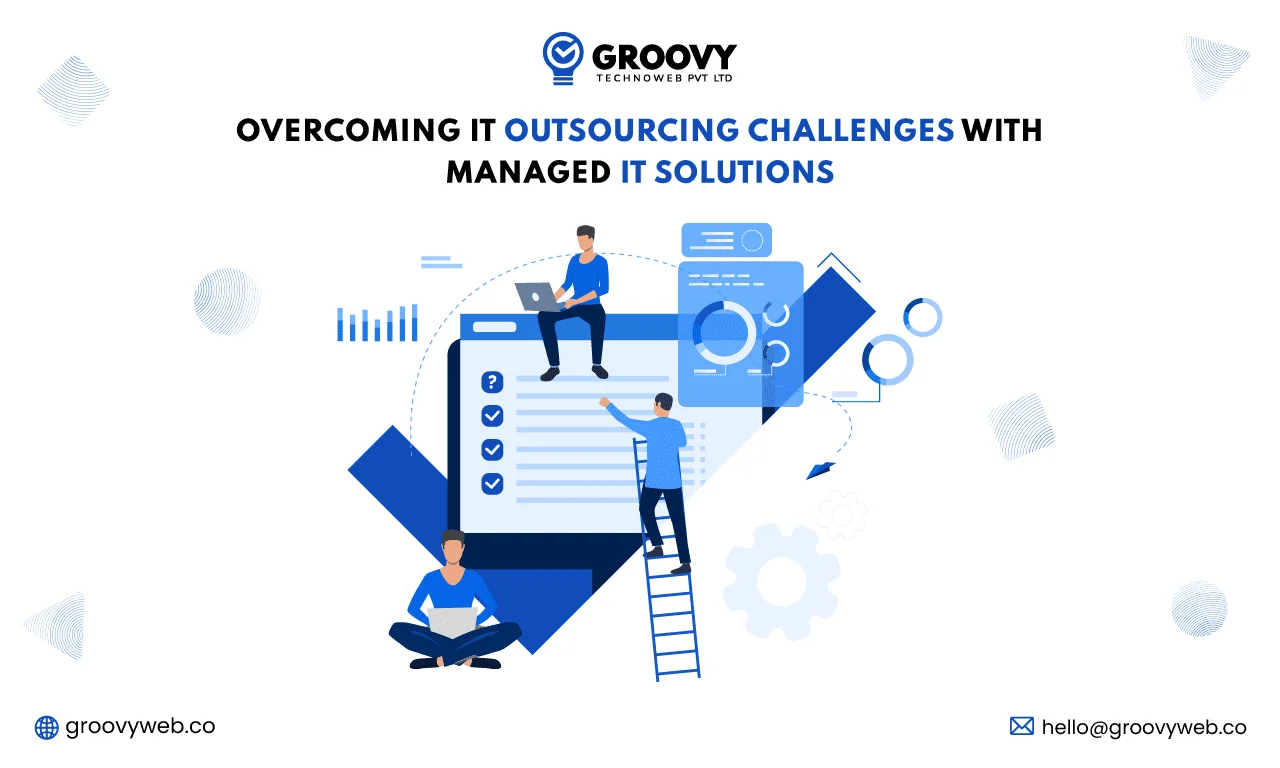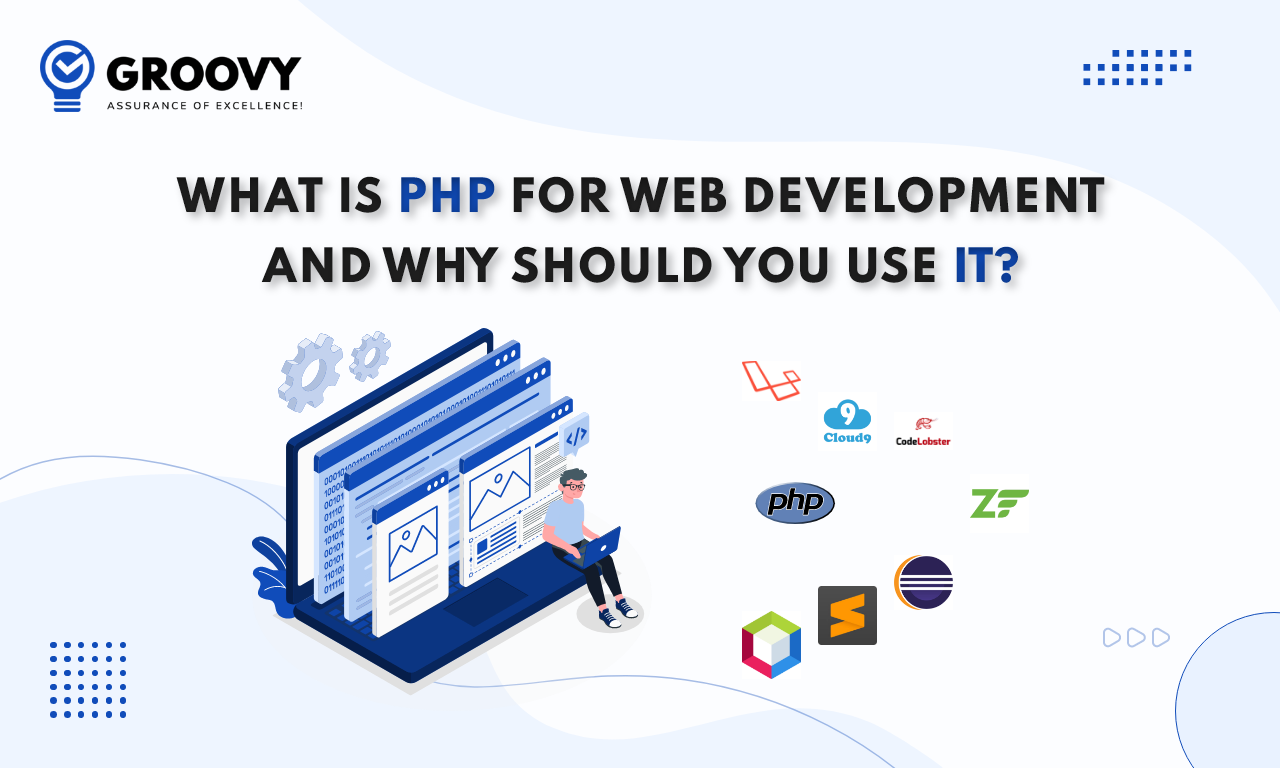Why is Building a Clinical Trial Management System (CTMS) Essential?
Ashok Sachdev
August 07, 2024 331 Views
Quick Summary : A Clinical Trial Management System (CTMS) is a specialized software designed to streamline the planning, tracking, and management of clinical trials. It centralizes all trial-related information, ensuring efficient data management, regulatory compliance, and enhanced collaboration among stakeholders. Key benefits of a CTMS include improved data accuracy, reduced administrative burdens, optimized patient recruitment and retention, and significant cost savings. With features like protocol management, site monitoring, and customizable workflows, a CTMS is essential for conducting efficient, compliant, and successful clinical trials.
Trial management is a critical success factor in the fast-paced field of clinical research. Clinical Trial Management Systems (CTMS) are useful in this situation. CTMS systems, which are made to improve and expedite the clinical trial process, are essential for biotech, pharmaceutical, and clinical research organizations (CROs).
In this blog, we will discuss introduction to CTMS dives into the fundamentals and provides information on its goals, elements, advantages, and potential future developments. We’ll also go over how Groovy assists you in creating a best-in-class CTMS platform that is customized for your requirements.
What is a Clinical Trial Management System (CTMS)?
A Clinical Trial Management System (CTMS) is a tailored, rather vital component of any clinical study management or supervision. It acts as the single, centralized area of procedures that puts all the various activities of a clinical trial process into one location: planning and execution, monitoring, reporting, and completion. The primary objective of the CTMS is to support the successful execution of clinical trials to meet regulatory criteria and deliver results as expected and on time.
CTMS systems are designed to manage clinical trials, which are inherently complex and multi-faceted activities. Key functionality includes planning tools for scheduling, budgeting, and resource allocation; protocol management supporting the development and approval of study protocols; systems allowing for effective tracking and engaging of participants in patient recruitment and retention; and site management used to select and oversee trial sites.
It is quite common to interface CTMS systems with EDC systems to back up smooth data administration and collection, ensuring the accuracy and compliance of the data. Additionally, the integration of telemedicine solutions, such as when organizations develop telemedicine apps, enhances patient engagement and facilitates remote monitoring, making participation in trials more accessible and efficient. CTMS lightens a great deal of the administrative load with its offering of real-time insights, stakeholder collaboration, and automation of repetitive operations in general, which increases effectiveness and caliber in clinical trials.
Purpose of a Clinical Trial Management System (CTMS)
The major role of CTMS is to enhance and promote clinical trial management through automation and centralization of the main activities involved in the process. Planning, direction, summarizing progress, participant’s information, all the legal formalities, and ensuring proper communication between all interested parties—all this should be efficiently supported. A CTMS organizes and increases overall accuracy and efficiency by consolidating several jobs into one platform, hence allowing for decreased complexity and costs related to clinical trials.
At Groovy, we deal in the development of customized Clinical Trial Management solutions to suit your company’s needs. We specialize in the development of AI-powered, bespoke CTMS platforms to deliver the most recent capabilities for compliance, performance, and teamwork—apart from smoothening your trial management procedures. We have a dedicated team that works directly with clients on designing and implementing state-of-the-art CTMS solutions to ensure effectuality and success throughout the entire clinical trial process.
Key Components of a Clinical Trial Management System (CTMS)
A well-designed Clinical Trial Management System (CTMS) integrates several vital components to support efficient trial management:
1. Protocol Management
This component facilitates the development, approval, and oversight of trial procedures. It ensures that procedures are accurately written, evaluated, and updated as needed to maintain consistency and compliance with study objectives and regulatory requirements.
2. Study Planning
This function helps with scheduling, budgeting, and resource allocation, which contributes to the thorough preparation of clinical trials. It assists project managers in developing comprehensive plans that complement trial schedules and resource availability, guaranteeing that every facet of the trial is suitably funded and arranged.
3. Site Management
Clinical trial success is highly dependent on the efficient management of study sites. This part oversees the process of choosing, starting, and keeping an eye on trial locations. It makes sure that sites are picked based on their suitability for the trial and are regularly checked for performance and compliance during the investigation.
4. Patient Recruitment and Retention
The goal of this function is to monitor and improve patient engagement and enrollment. It improves retention rates by assisting in the identification of possible participants, overseeing the recruitment procedure, and facilitating continuous connection with patients to keep them engaged in the study.
5. Data Management
Effective data collection and management require integration with Electronic Data Capture (EDC) systems. This part makes it easier to collect, store, and handle clinical trial data efficiently while maintaining data security, accuracy, and accessibility across the trial. Additionally, the integration of telemedicine solutions, such as when organizations that develop apps, enhances patient engagement and facilitates remote monitoring, making participation in trials more accessible and efficient. CTMS lightens a great deal of the administrative load with its offering of real-time insights, stakeholder collaboration, and automation of repetitive operations in general, which increases effectiveness and caliber in clinical trials.
6. Compliance Management
A CTMS provides compliance management tools to ensure that regulatory criteria are met. This component assists in monitoring and maintaining compliance with regulatory criteria established by regulatory agencies such as the FDA, EMA, and other authorities, lowering the risk of noncompliance issues and potential delays.
7. Reporting and Analytics
Robust reporting and analytics tools are essential for gathering insights and making sound decisions. This component may generate thorough reports, analyze trial data, and track key performance indicators, allowing stakeholders to properly monitor trial progress and outcomes.
Advantages of Implementing a Clinical Trial Management System (CTMS)
There are many significant advantages associated with the implementation of a CTMS system. Some of the main advantages are:
1. Enhanced Efficiency
A CTMS significantly reduces administrative work by automating all routine operations and thus speeding up the clinical trials. It makes all tasks, from scheduling to monitoring and even reporting, easier and thus gives researchers more time to focus on key activities.
2. Better Data Accuracy
A CTMS ensures data integrity by providing real-time data entry and validation of data, hence minimizing the occurrence of possible errors and discrepancies. This provides accurate and reliable data critical for making informed decisions and regulatory submission.
3. Regulatory Compliance
CTMS ensures that the industrials rules and guidelines, such as those set by FDA and EMA, are adhered to. A CTMS makes compliance easier; hence, it lowers the risk of non-compliance. Subsequently, legal issues associated with non-compliance are also reduced.
4. Better Collaboration
Clinical trial management ensures smooth communication and coordination between investigators, sponsors, regulatory bodies, and study subjects. Such a collaborative setup ensures that the effectiveness and results of the trials are increased.
5. Cost Reduction
The clinical trial management system shall greatly help in reducing the costs involved in data management and administrative work, including supervision, by automating and streamlining the procedures of trial management. This saves time and resources.
6. Real-Time Insights
One huge advantage of using a CTMS is having real-time trial data also users can interact with in real time apps. This enables stronger decision-making in that, at a go, stakeholders can tell what the issues are, track progress, and make informed changes to procedures as necessary.
Overcoming Challenges in Implementing a Clinical Trial Management System (CTMS)
While implementing a CTMS offers significant advantages, several challenges must be addressed to ensure a successful deployment:
-
Seamless Integration
One of the most prominent challenges would be CTMS integration with other existing systems like RTSM, EDC, and ePRO. Inevitably resource-intensive and technically difficult, such integration is required to have a constant flow of data and efficient trial management. The company should ensure that data between these systems flows smoothly and is compatible, whereby most often it requires extensive testing and custom developments.
-
User Adoption and Training
Another huge challenge in this context is how to train and familiarize all the stakeholders with this new system in place, be it the clinical researchers, coordinators, or the administrative staff. Resistance to change or unfamiliarity with the new platform can serve as a block to successful adoption. A thorough training program, on-going support, and ease of use hold the key to ensure smooth flow and wide acceptance of the CTMS.
-
Cost Considerations
The primary implementation of any CTMS, along with the ongoing maintenance and support process, is expensive. Any organization should work out and reaffirm its ROI and look at long-term benefits against short-term expenditures or costs on app development investment. Budgeting for periodic upgradations, system improvement, and training programs is also necessary to ensure the CTMS works as effectively and remains relevant.
-
Customization Needs
Although personalization may be required by every business since it may have different needs while managing clinical trials, tailoring the system according to the specific requirements of each organization is not easy. This will require a study of the organization’s overall operations, the legal formalities in vogue, and the protocols of the trials. Often, this necessitates developing unique features and functionalities with CTMS providers, which is always difficult and time-consuming. Custom Software Development becomes essential in this context, as it allows for the creation of bespoke solutions that cater to the unique demands of each clinical trial, ensuring that the system aligns perfectly with the organization’s needs and regulatory requirements.
-
Challenge of Data Migration
It takes careful preparation and execution to move trial data from old systems to the new CTMS. In pursuit of achieving this, security, accuracy, and integrity about the data usually to be migrated should be ensured. Vendors should also be attentive to any kind of data incompatibilities and ensure robust processes for data migration to prevent loss or damage to data in any form.
Essential Features to Consider When Choosing a CTMS
When selecting a Clinical Trial Management System (CTMS), consider these essential features:
- User-Friendly Interface: An intuitive design for easy navigation and efficient use.
- Scalability: The ability to grow with your organization, accommodating increased data and users.
- Customization Options: Flexibility to tailor the system to your specific trial processes and needs.
- Seamless Integration: Integration with critical systems like EDC, ePRO, and RTSM for smooth data flow.
- Advanced Reporting and Analytics: Real-time reporting tools for actionable insights and data-driven decision-making.
- Regulatory Compliance Management: Robust features to ensure compliance with industry regulations and standards, including automated tracking and audit trails.
Emerging Trends in Clinical Trial Management Systems (CTMS)
The need for significantly improved trial operations, combined with rapid technological advancement, has been a driving force behind the emergence of Clinical Trial Management Systems.
The integration of artificial intelligence and machine learning is an obvious trend. Combining technology can totally transform clinical trials by making predictive modeling easier, expediting decision-making, and improving data processing. Another significant advancement in clinical trials is the use of blockchain technology to improve data security and transparency—an important admission before going live to ensure the integrity of study results.
Wearable technology is rapidly being used in clinical trials. Trial outcomes are more reliable and timelier when data is obtained directly from participants and patients are monitored in real time.
Cloud-based solutions for the management of clinical trial data and resources will continue to gain appeal due to their versatility and scalability. Furthermore, patient-centric approaches are becoming more and more popular. These kinds of programs aim to provide each trial participant with a unique experience, which will raise patient happiness and participation.
Groovy uses its cutting-edge technological expertise to incorporate these innovations into our distinctive Clinical Trial Management systems. To keep our clients ahead of the competition, our team works to develop CTMS solutions that not only meet the needs of clinical research organizations, pharmaceutical companies, and biotech companies today, but also adapt over time. Groovy’s excellent integration of the newest tools and technology will enable users to realize CTMS, which is future-ready, enhanced patient involvement, strong data security, and increased productivity.
Wrapping Up
One of the most crucial components of streamlining clinical trial design, execution, and monitoring to guarantee efficient management under the strict rules in effect is the use of clinical trial management systems. Pharmaceutical businesses, biotech companies, and clinical research organizations can enhance patient enrollments, expedite trial processes, and achieve better outcomes by utilizing a robust CTMS. Groovy has extensive experience creating state-of-the-art CTMS systems tailored to individual clients. Our expert team offers you a robust, amiable, and feature-rich platform to enhance each stage of your clinical trials by fusing the newest technology with industry-neutral best practices, including developing a telemedicine or telehealth app.
With Groovy, you receive a Clinical Trial Management solution that aims to boost accuracy, efficiency, and regulatory compliance. Collaborate with us to have a CTMS experience that surpasses your expectations. Get in touch with Groovy right now to transform the way you handle clinical trials and advance the effectiveness of your research.
Written by: Ashok Sachdev
Ashok Sachdev is the Project Manager at Groovy Web who began his professional career as a programmer at the young age of 17. Ever since then he is actively growing, learning new things, and adapting to new roles and responsibilities at every step. Aside from being an app developer, he is highly admired for his project management skills by his clients.
Frequently Asked Questions
We hope these clear your doubts, but if you still have any questions, then feel free to write us on hello@groovyweb.coWhy is a CTMS important for clinical trials?
An accurate and efficient clinical trial system is dependent upon a CTMS. In the end, it produces faster and more accurate trial results by centralizing all trial-related data, guaranteeing regulatory compliance, improving data integrity, and lowering administrative costs.
How does a CTMS improve data management in clinical trials?
A CTMS offers a single location for all trial-related data, which enhances data management. By ensuring data consistency, making data retrieval and sharing simple, and enabling real-time changes, it reduces errors and improves the trial data's overall quality.
What features should I look for in a CTMS?
Protocol administration, patient recruiting and retention tools, site monitoring, regulatory compliance assistance, data management and reporting, integration possibilities with other systems, and user-friendly interfaces are important aspects to look for in a CTMS.
What are the cost benefits of implementing a CTMS?
Clinical trial expenses can be greatly decreased by putting in place a CTMS. Overall cost savings result from minimizing administrative costs, lowering data input errors, expediting study durations, and optimizing resource allocation.
Related Blog

Krunal Panchal
Groovy Web LLP Is One Of The Best Web Developers In India According To Clutch
Achivements 13 Nov 2024 2 min read
Ashok Sachdev
Overcoming IT Outsourcing Challenges with Managed IT Solutions
Technology 27 Feb 2025 12 min read
Ashok Sachdev
What is PHP for Web Development and Why Should You Use It?
Web App Development 16 Apr 2025 12 min readSign up for the free Newsletter
For exclusive strategies not found on the blog